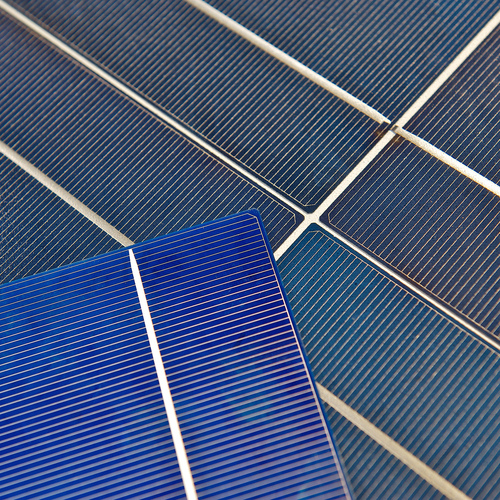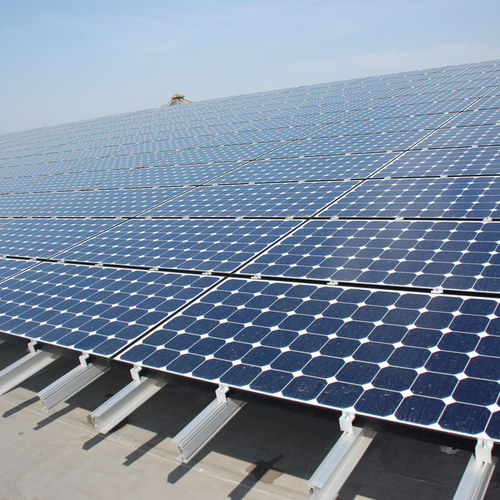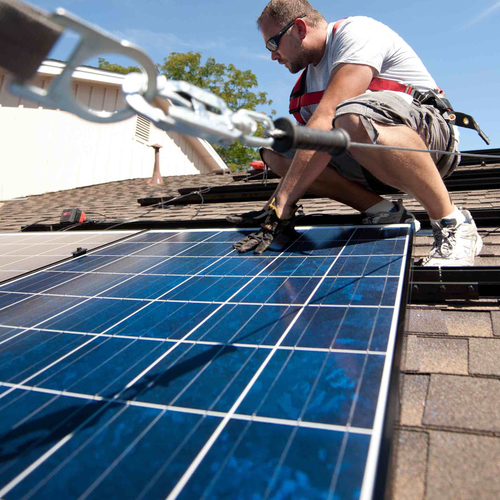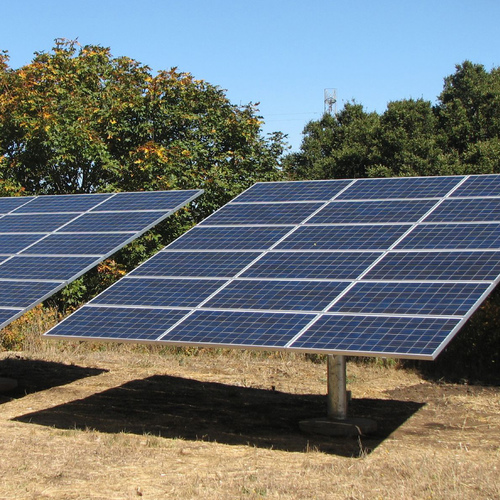
Image Credit: Samfabersf via Pixabay
More efficient manufacturing processes have steadily reduced the amount of energy required to make photovoltaic (PV) modules, cutting the amount of time it takes for a panel to produce as much energy as was used to manufacture it to two years or less, a new study concludes.
Writing in the journal Nature Communications, Wilfried van Sark and his colleagues find that the break-even point for all of the PV panels manufactured worldwide between 1975 and 2015 falls no later than 2018, and could even have already occurred, as early as 1997.
The study may help settle a debate over the net environmental benefit of solar panels. Skeptics note that the large amount of electricity needed to melt and purify the silicon used to make the PV cells comes mostly from power plants burning fossil fuels, a recent article in The Economist says. That produces a lot of carbon dioxide, meaning that PV panels have a large “carbon debt” that must be settled before the panels are able to make a genuine environmental contribution.
Van Sark and his fellow researchers from Utrecht University in the Netherlands used data from the International Energy Agency to calculate the number of PV panels installed worldwide over the last 40 years. They relied on dozens of published studies to estimate the amount of energy required to make them, and consequently the amount of carbon dioxide emitted during the process.
Manufacturing efficiency is improving
Researchers found that PV modules manufactured today are responsible for an average of 20 grams of carbon dioxide per kilowatt hour of electricity produced over their 30-year life span. That’s a decrease from the 400 to 500 grams per kWh in 1975-era panels. The break-even point — when energy output equals manufacturing energy input — has fallen from 20 years to just two years.
Each time the world’s solar capacity doubled, the energy required to make a PV module fell by about 12%, The Economist said, while carbon dioxide emissions associated with the process dropped by 17-24%.
Still, the global break-even point remains vague. Because of uncertainties in the computer model as well as photovoltaic performance, researchers said that the break-even point could have occurred as early as 1997. At worst, the industry will reach that milestone next year.
Over that 40-year period, cumulative installed PV capacity grew from less than 1 megawatt to about 180 gigawatts, with a compound annual growth rate of 45%, the study said. China was expected to surpass Germany as the country with the most installed PV capacity in 2015.
Weekly Newsletter
Get building science and energy efficiency advice, plus special offers, in your inbox.















4 Comments
If one uses solar power to
If one uses solar power to build solar panels then the breakeven point is zero years is it not?
Response to Alan B
Alan,
Several PV manufacturers have built solar-powered factories. Here is one example from 2008: Sharp Solar developing a solar powered factory.
Such factories are still open to criticism, because on cloudy days, they still use grid power (and the grid power is often supplied from fossil fuels).
If a factory is located in a country (like Iceland or Norway) with lots of hydropower, or a province like Manitoba with lots of hydropower, it could be argued that the CO2 emissions are relatively low.
Glad to hear it, one could
Glad to hear it, one could reduce production on cloudy days or use wind power as well, or run at night when some regions have excess power they have no use for (Ontario Canada is a good example).
If a company uses some grid power they can still average out their fossil usage, if say 30% is carbon power then that 2 year breakeven point is now just over 7 months.
In the end i don't think this matters, even a couple years means little and at 1% solar penetration solar power has a long upward trajectory available.
Break even
When does energy break even occur when the entire ensemble of hardware (panel, mount, battery pack, controller) is considered. This would be for a battery pack that had maybe 3X the panel's daily KWh output.
Log in or create an account to post a comment.
Sign up Log in